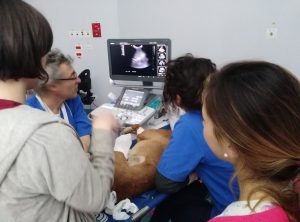Detection of Leishmania infantum, Babesia canis, and rickettsiae in ticks removed from dogs living in Italy
Trotta M1, Nicetto M, Fogliazza A, Montarsi F, Caldin M, Furlanello T, Solano-Gallego L.
Detection of Leishmania infantum, Babesia canis, and rickettsiae in ticks removed from dogs living in Italy.
Ticks Tick Borne Dis. 2012 Dec;3(5-6):294-7. doi: 10.1016/j.ttbdis.2012.10.031. Epub 2012 Nov 20.
Chiedi una copia della pubblicazione all’autore
Abstract
The aims of this study were to determine natural infections by Anaplasma phagocytophilum/Anaplasma platys, Bartonella henselae, Ehrlichia canis, Leishmania infantum, Rickettsia spp., Babesia spp., and Hepatozoon spp. by molecular methods in ticks (n=91) removed from dogs with clinical signs and laboratory abnormalities compatible with tick-borne diseases (n=22) living in Italy and to assess the distribution and species of ticks encountered. Ticks from dogs living in southern Italy were all identified as Rhipicephalus sanguineus (n=25), ticks from central Italy included Rh. sanguineus (n=8) and Ixodes ricinus (n=9), ticks from northern Italy included Rh. sanguineus (n=45), Dermacentor marginatus (n=3), and one I. ricinus. Leishmania infantum, Rickettsia spp., and Babesia canis were the only pathogens detected in 7 (8%), 4 (4%), and 2 (2%) out of 91 ticks, respectively. L. infantum was detected in I. ricinus from central Italy and in Rh. sanguineus from northern and central Italy. Rickettsia conorii and Ri. massiliae were detected in Rh. sanguineus ticks from central and southern Italy (Sicily), respectively. Bab. canis was detected in D. marginatus ticks from northern Italy.






 Il Direttore Sanitario Dott. Marco Caldin
Il Direttore Sanitario Dott. Marco Caldin